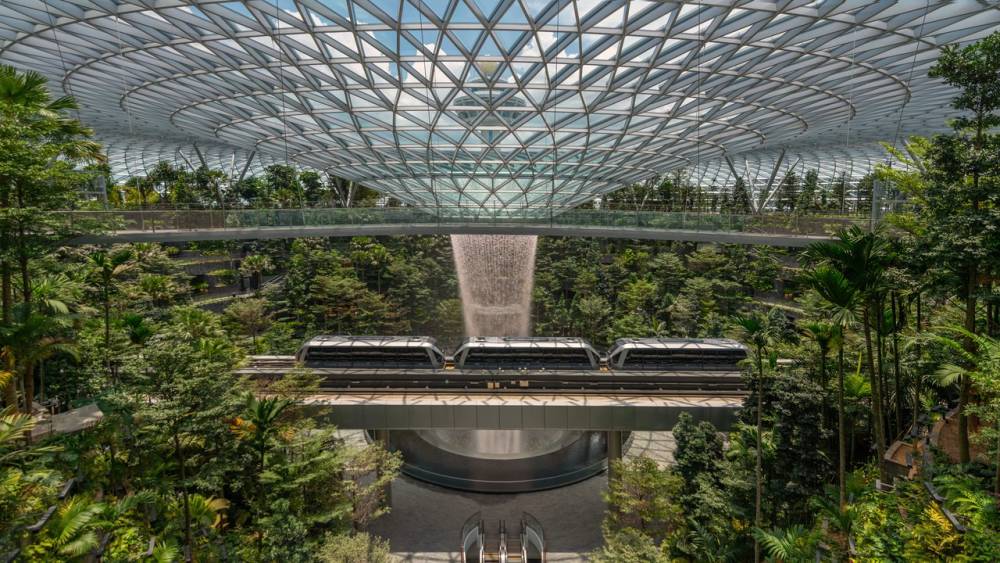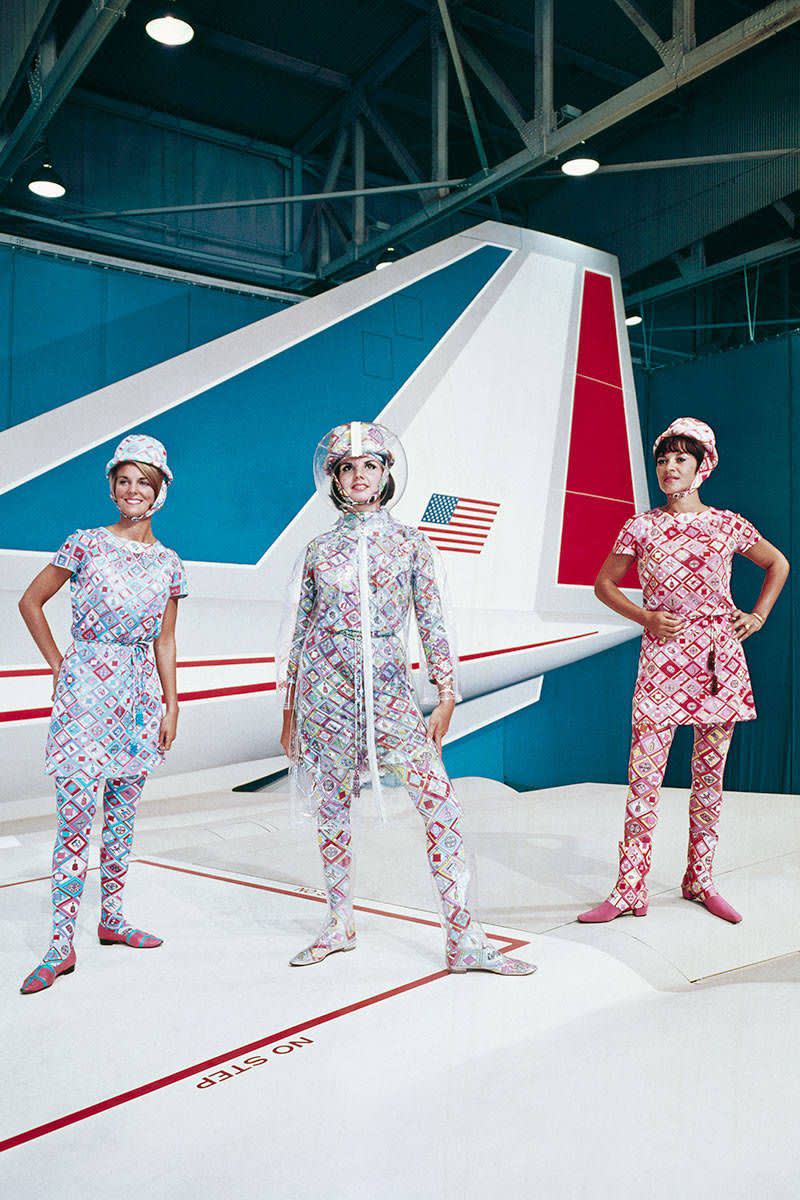
Emilio Pucci for Braniff International Airways
1960-70
Since its invention in the early 20th century, air travel has been a marker of social and economic capital as well as a symbol of freedom, the spread of information, and globalization. From a humble 59-second flight by the Wright Brothers in 1903, to modern day nonstop trips around the globe, the motif of air travel has permeated the worlds of art, fashion, architecture, and design for over a century.
Even before commercial air travel was readily available to the public, early pilots became media sensations. The masses were drawn to the freedom of movement and sense of adventure that pilots had come to represent. Early female pilots — aptly named ‘aviatrixes’ — faced gender discrimination and difficulty finding flight apparel that was functional, professional, and morally appropriate; due to open cockpits, female pilots would often resort to tying down their skirts and securing hats with scarves. With little to no alternatives on the market, some female pilots even wore men’s flying suits, or else adapt other sports apparel for the occasion.
In 1936, Vogue profiled Harriet Quimby, the first woman to fly across the English Channel, in an article about aviatrixes. Quimby, who commissioned a plum-colored flight suit for the occasion, epitomized the modern woman. Flight allowed a daring sense of freedom and adventure that women weren’t previously afforded, and fashion brands recognized the marketability of this cultural shift. Often, aviatrixes became spokeswomen, models, and designers for brands whose female customers idolized the image of modernity these women projected.
Harriet Quimby
Aviatrixe
Harriet Quimby
Aviatrixe
By the 1950s flight became increasingly more accessible, and for the wealthy, transatlantic travel transitioned swiftly from boats to airplanes. The rise in popularity of air travel can be traced through the evolution of luggage design, particularly the history of famed luggage maker Louis Vuitton. Vuitton began as a Parisian trunk-maker, apprenticing for 17 years before founding his eponymous company in 1854. The slat trunk, first created by Vuitton in 1855, became popularized throughout the latter 19th century with the robust rise of train travel. The design’s flattened top allowed for trunks to be stacked, while their sturdy waterproof shell and ample interior layout offered a space-efficient, modern, and chic means of carrying a week’s worth of ensembles.
Louis Vuitton’s company also grew a reputation for the strength of its hardware, epitomized in 1890 when Vuitton’s son, Georges, challenged escape artist Harry Houdini to break out of one of his “unpickable locks,” which later became a symbol of the Vuitton brand. Vuitton’s revolutionary slat trunk and secure fastening systems were, in many ways, symbolic of the developments in travel to come.
At the turn of the 20th century, coinciding with the invention of air travel, the suitcase was further modernized and marketed as a compact and lightweight solution to transport dress-suits without wrinkles. At which time the company Samsonite, founded by the Shwayder Brothers in 1910, began using durable materials such as vulcanized fiber and polypropylene for its suitcases. Compared to trunks, the ease of movement enabled by modern day luggage became a symbol of mystery and intrigue, epitomized by Tippi Hendren’s role in the 1964 Alfred Hitchock film Marnie, in which the titular character changes her identity throughout the film with the help of disguises that she stows in her compact suitcase.
Louis Vuitton
Vintage Poster, Advertising for Luggage
Louis Vuitton
Vintage Poster, Advertising for Luggage
Louis Vuitton
Early Trunk Design
The Shwayder Brothers
Standing on a Samsonite Suitcase
Tippi Hedren
“Marnie” by Alfred Hitchcock, 1964
Today, brands such American luggage designer and retailer ‘Away’, and LVMH-owned German luggage manufacturer RIMOWA, have captured tremendous market share of the multi-billion dollar a year industry through their likeminded quest towards innovation in the travel sector. Equipped with cell phone chargers, indestructible shells, built-in locks, and 360-degree spinner wheels, Away’s luggage has become a favorite amongst jet-setting youngsters. Likewise, RIMOWA’s sleek designs and slew of in-demand collaborations with everyone from Fendi and skatewear brands Supreme and BAPE, to designer Virgil Abloh, artist Alex Israel, and a recently-released capsule collection for Dior Homme envisioned by contemporary sculptor Daniel Arsham and creative director Kim Jones, have made luggage is as hot a commodity today as an Hermès Birkin or Yeezy Sneakers.
RIMOWA x Fendi
Suitcase
RIMOWA X Supreme
Suitcase
RIMOWA x Off-White
Suitcase
RIMOWA x ALEX ISRAEL
RIMOWA X Dior
Spring/Summer 2020 Menswear
RIMOWA X Dior
Spring/Summer 2020 Menswear
Away
The Carry-On
By the time air travel reached peak popularity in the 1960s, the stewardess was a jet-setting symbol of modern femininity. Unmarried, slender – much like fashion models today, airlines enforced strict regulations on the appearance and weight of these women —and hopelessly elegant, designers began collaborating with airlines to dress stewardesses in the early days of air travel, effectively associating themselves with this unwaveringly modern aesthetic.
In 1951, Air France asked Georgette de Tréze to epitomize the spirit of the modern woman through a set of basic designs for varying weather conditions, while in 1962, the airline debuted the first “couture” uniforms by Marc Bohan of Dior, consisting of a “Marceau” blue skirt suit and a matching pillbox hat. In 1969, in need of another refresh, Air France commissioned Spanish designer Cristobal Balenciaga to devise a new uniform allowing for further comfort and ease of movement, for which Balenciaga included kangaroo pockets, a turned-down collar, and a terylene twill blouse.
Georgette de Trèze for Air France
Uniform, 1951
Marc Bohan of Christian Dior for Air France
Uniform, 1963
Cristobal Balenciaga for Air France
Uniform, 1969
Air Hostess in Uniform
In the 1960s, Braniff International Airways hired Italian fashion designer Emilio Pucci to re-conceptualize their airhostess uniforms, a collaboration that continued throughout the 1970s. Pucci designed patterned ensembles with additional pieces for styling and layering, including culottes, suits, tights, tunics and headpieces, as well as neutrals to be mixed in. From 1966-68, Olympic Airways stewardesses wore uniforms designed by Coco Chanel, featuring a navy skirt suit, neck bow, and a matching hat, while from 1969 to 1971, Pierre Cardin took over the airline, designing a uniform that epitomized Cardin’s space-age aesthetic, and included a minidress, sleek cape, and bonnet hat.
During the years of Cardin at Olympic Airways, United Airlines uniforms were designed by Hollywood costume designer Jean Louis, and included an A-line double knit wool skimmer with hemlines at various lengths, and came in either “Maliblue” or “Hawaiian Sunset”. Looking to stand out, Cathay Pacific Airlines hired Pierre Balmain to design its uniforms from 1974-1983, consisting of a brightly colored wave-patterned blouse and tomato red skirt suit. Likewise, in 1986, Qantas Airways introduced uniforms designed by Yves Saint Laurent, for which Saint Laurent devised a bold, colorful kangaroo graphic, paired with a blue and red skirt, jacket and vest – all of which borrowed elements of the designer’s signature power suit. Most recently, Virgin Airways debuted a uniform in 2014 designed by Vivienne Westwood in the airline’s signature red hue complimented by an asymmetrical jacquard blouse, while in 2018, American designer Zac Posen created a set of plum uniforms for Delta’s female cabin crew.
Emilio Pucci for Braniff International Airways
1960-70
Emilio Pucci for Braniff International Airways
1960-70
Coco Chanel for Olympic Airways
Pierre Cardin for Olympic Airways
Jean Louis for United Airlines
1968-70
Yves Saint Laurent for Qantas Airways
1986
Vivienne Westwood for Virgin Atlantic
2014
Zac Posen for Delta
2018
Historically, airlines have searched for creative means to incorporate beauty, design and artistry into air travel, outside of just stewardess uniforms. As early as World War I, fighter pilots began personalizing their airplanes with symbols and decorations, such as images of seductive pin-up girls. Italian pilot Francesco Baracca, for example, painted his plane with a prancing stallion that went on to become the symbol of Ferrari. During the revamping of Braniff International in 1965, through a project called “End of the Plain Plane”, architect Alexander Girard painted the airline’s fleet in candy tones, at which time Braniff also labeled themselves the airline of choice for Andy Warhol and Salvador Dali, featuring both artists in its advertisements. Going even further, in 1973 Braniff hired American sculptor Alexander Calder to paint two jumbo airplanes for yet another campaign – one the artist decorated with his signature primary-colored geometric shapes, and another with red and blue swirls.
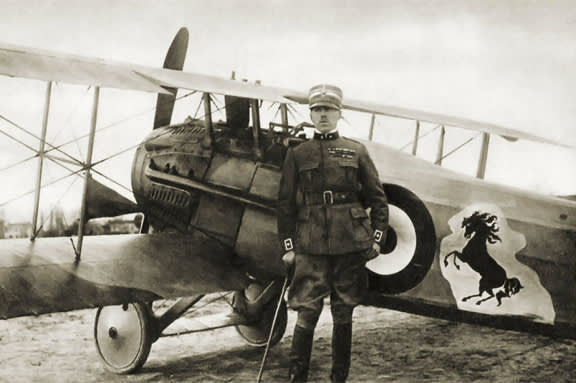
Francesco Baracca
Ferrari Horse Artwork on Plane
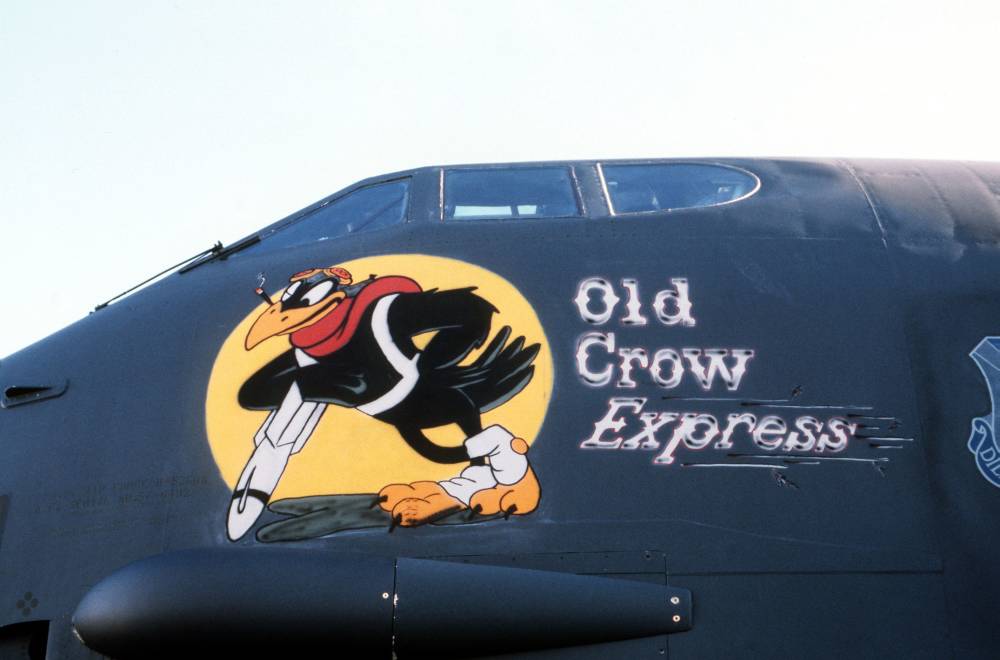
World War II, Artwork on Fighter Pilot's Plane
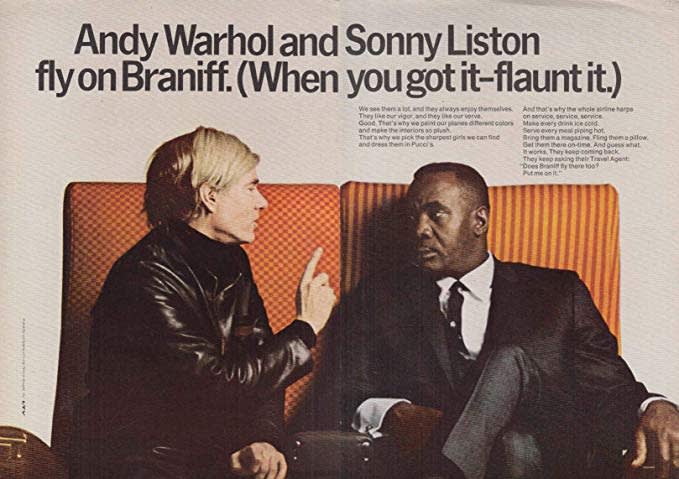
Braniff
Ad with Andy Warhol
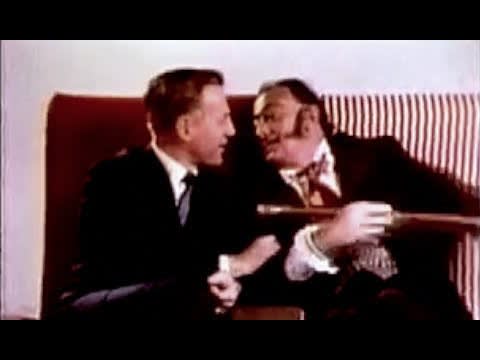
Braniff
Ad with Salvador Dali
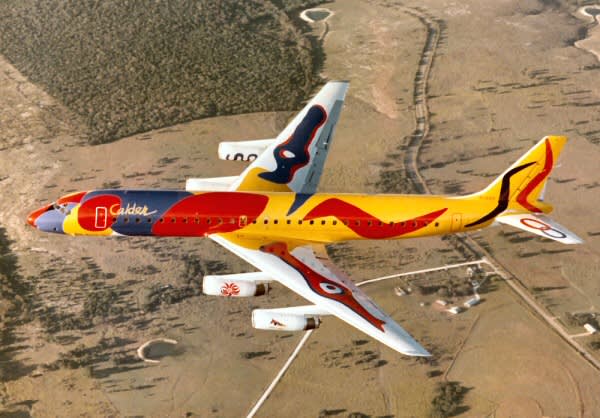
Alexander Calder for Braniff
1973-75
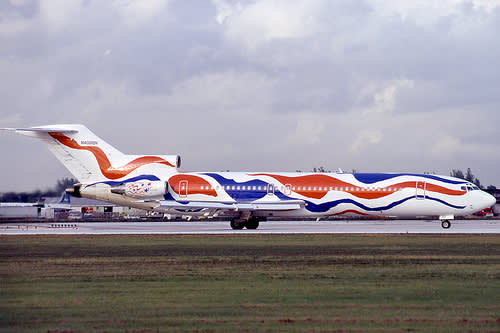
Alexander Calder for Braniff
1973-75
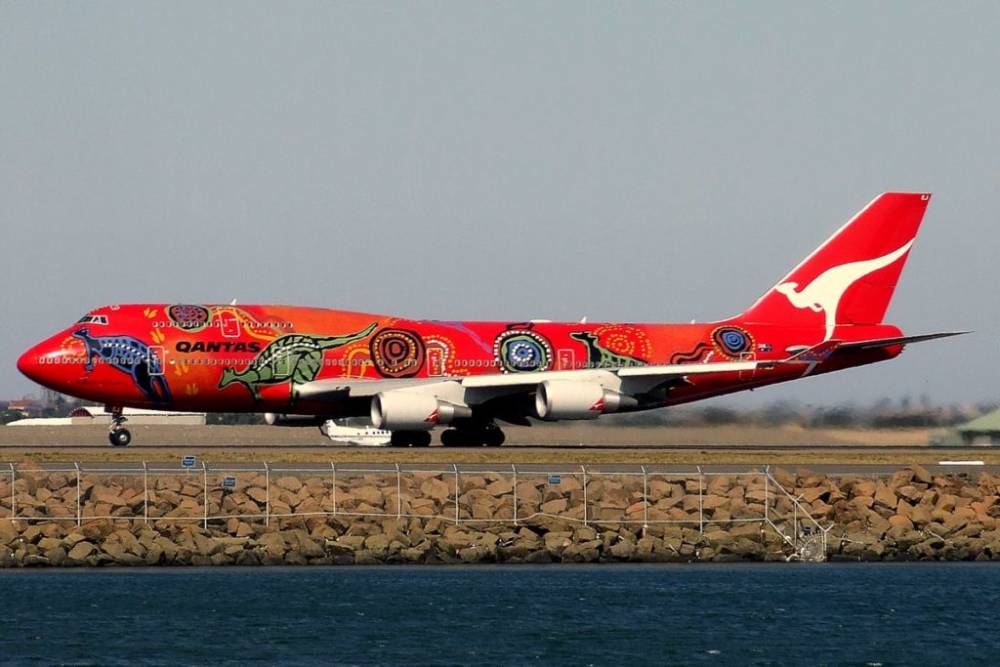
Various Artists
Qantas Boeing 747, Painted
These large-scale examples are hardly the only instances of art and flight in collaboration. Many artists have been fascinated with the freedom and modernity that air travel signifies, and have gone on to incorporate these themes into their work. Roy Lichtenstein’s ‘Whaam!’ (1963) for example, illustrates an image of an American fighter pilot from an old fashioned comic book. Lichtenstein’s childish style negates any patriotism associated with the original comic, instead making fun of the masculinity associated with airplanes in war. In the 1980s, Andy Warhol produced “Aeroplane” screen prints, while Man Ray’s “Rayograph,” made around the end of World War II, re-constructs the victory of the Allies from toy airplanes.

Roy Lichtenstein
Whaam!, 1963

Andy Warhol
Aeroplane, 1980s
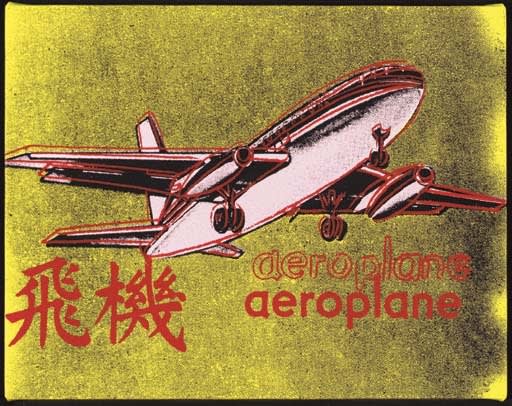
Andy Warhol
Aeroplane, 1980s
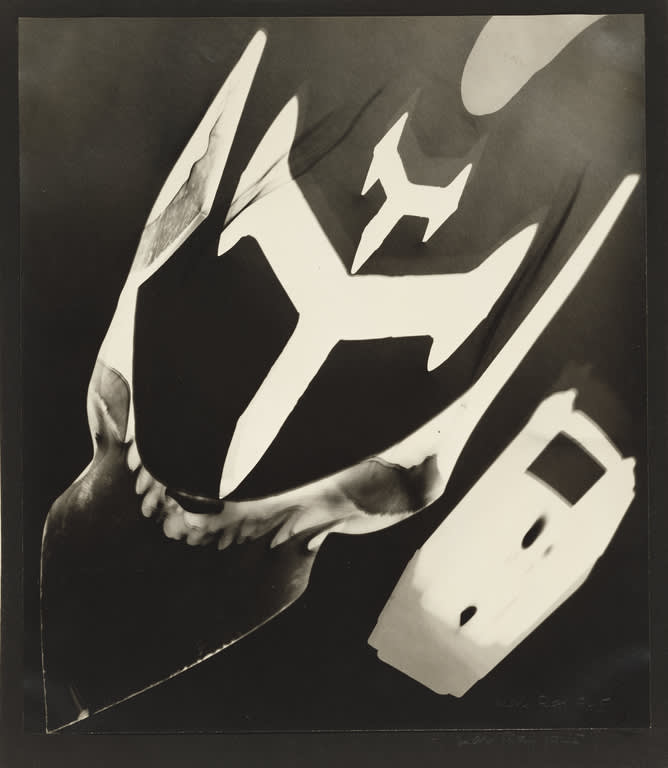
Man Ray
Rayograph, 1945
Airports, too, have historically opened up an opportunity for beauty and innovation through architectural means. New York City’s largest airport, JFK, opened in 1948 and was dubbed “Terminal City” due to its separate freestanding terminals, often operated by a single airline. Wallace K. Harrison, an architect known for his leading role in the development of New York’s Rockefeller Center in the 1930s, coordinated designs for the project, for which Harrison elevated the floating terminals with fountains, gardens, and walkways. The project was extremely popular, with 5 million visitors passing through JFK in its first year alone. Some areas even received individual recognition. Pan Am’s terminal, for example, had a concrete umbrella over-gate to distinguish itself, while Trans World America’s terminal designed by Eero Saarinen became famous for its stingray-like structure and open interior. Despite its lack of functionality, the terminal’s space age design merited conservation while countless others have since been redeveloped. After hosting the Louis Vuitton 2020 cruise show in May 2019, Saarinen’s Terminal 5 has reopened as a TWA Hotel after years of renovation.
Unsurprisingly, Vuitton was hardly the first fashion house to employ air travel as a season’s theme or chosen runway environment, for spring/summer 2016 Chanel constructed a mock-airport terminal inside Paris’ Grand Palais, and staged their spring/summer 2012 couture collection - dubbed ‘Air Chanel’ - on a catwalk designed to resemble the interior of a Boeing Jet.
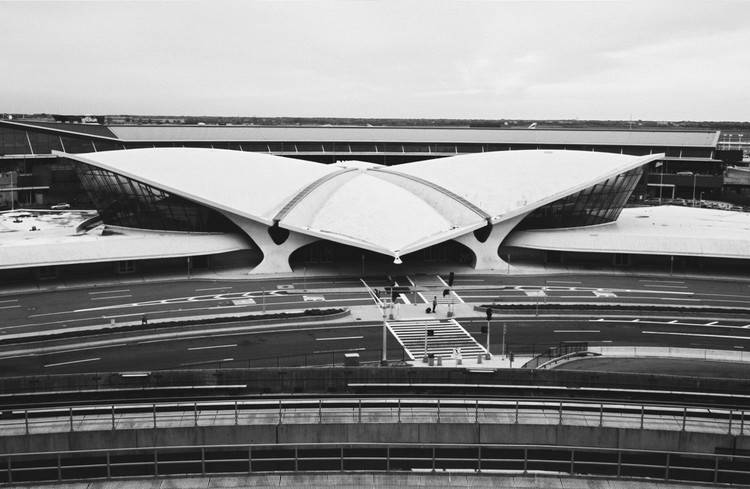
Eero Saarinen
Trans World America Flight Center at JFK

Eero Saarinen
Trans World America Flight Center at JFK, Interior

Eero Saarinen
Maquette for Trans World America Flight Center at JFK
Louis Vuitton
Resort 2020

Chanel
Spring/Summer 2016
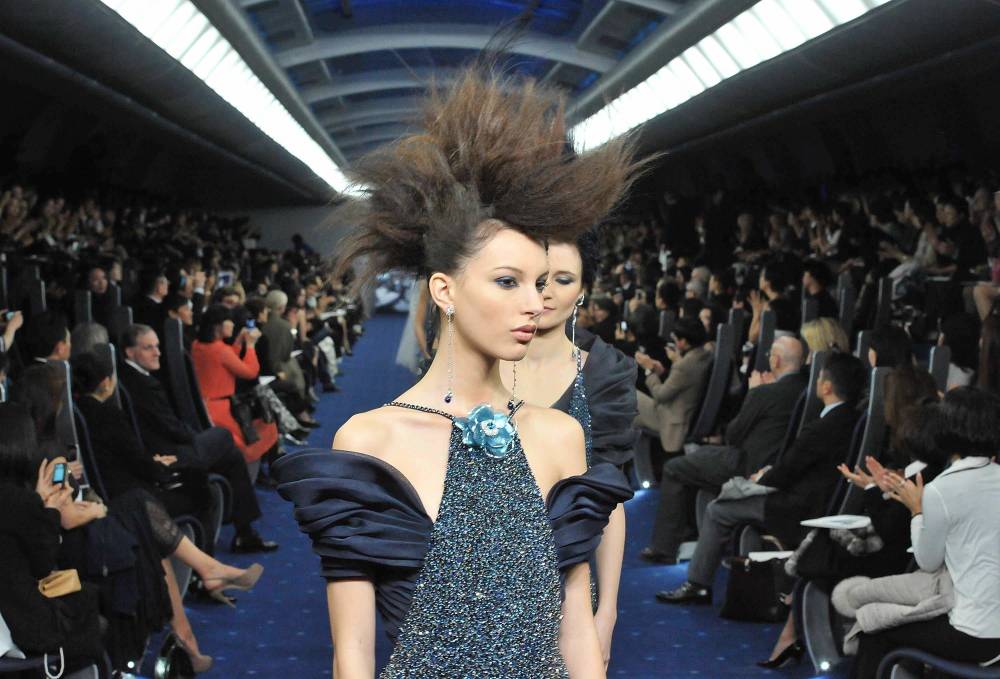
Chanel
Spring/Summer 2012 Couture
Since the TWA Flight Center first opened at JFK in 1962, countless airports and individual airlines have turned to famous architects for their respective designs, many of which have gained recognition for their devotion to continued innovation. Mexico City International Airport for example, currently under construction spearheaded by Norman Foster, will include a lightweight glass and steel shell as well as an ecologically friendly temperature moderating systems. The project will work with the city’s climate, harnessing sun and rainwater, in order to increase efficiency. Foster + Partners, well known for its work in airport and terminal design, boasts past projects including the Kuwait International Airport, Panama’s Tocumen International Airport, Jordan’s Queen Alia International Airport, and the New Mexico Airport. Similarly, Architect Santiago Calatrava has designed France’s Lyon-Saint Exupéry Airport, featuring steel arches to resemble a bird in flight, while the late architect Zaha Hadid designed The Circle at Zurich Airport and is working on a new terminal in Beijing, spearheaded by her firm. The project, set to be complete in 2040, is expected to be the world’s largest commercial airport, featuring seven runways.

Norman Foster
Mexico City International Airport
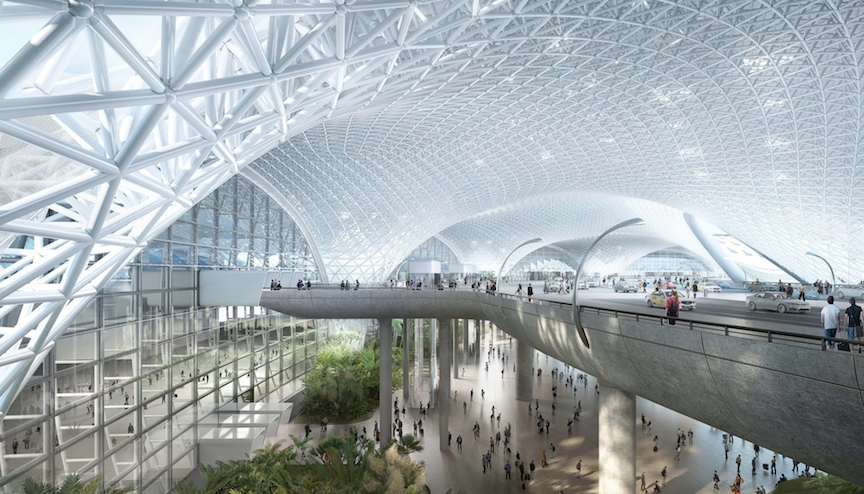
Norman Foster
Mexico City International Airport
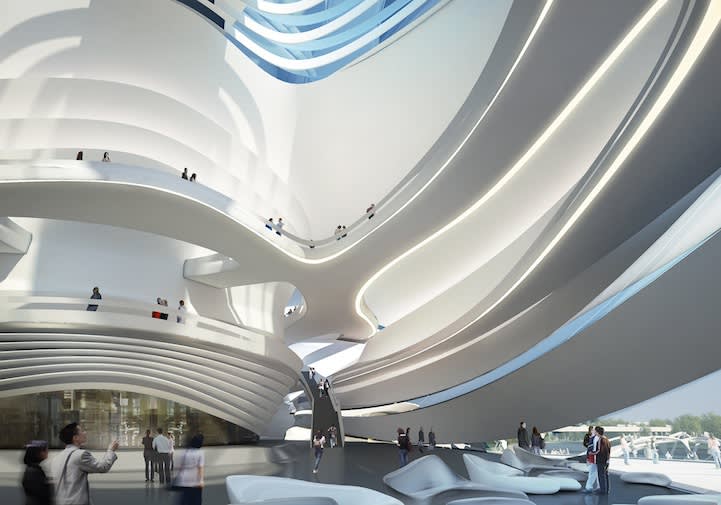
Zaha Hadid
The Circle at Zurich Airport
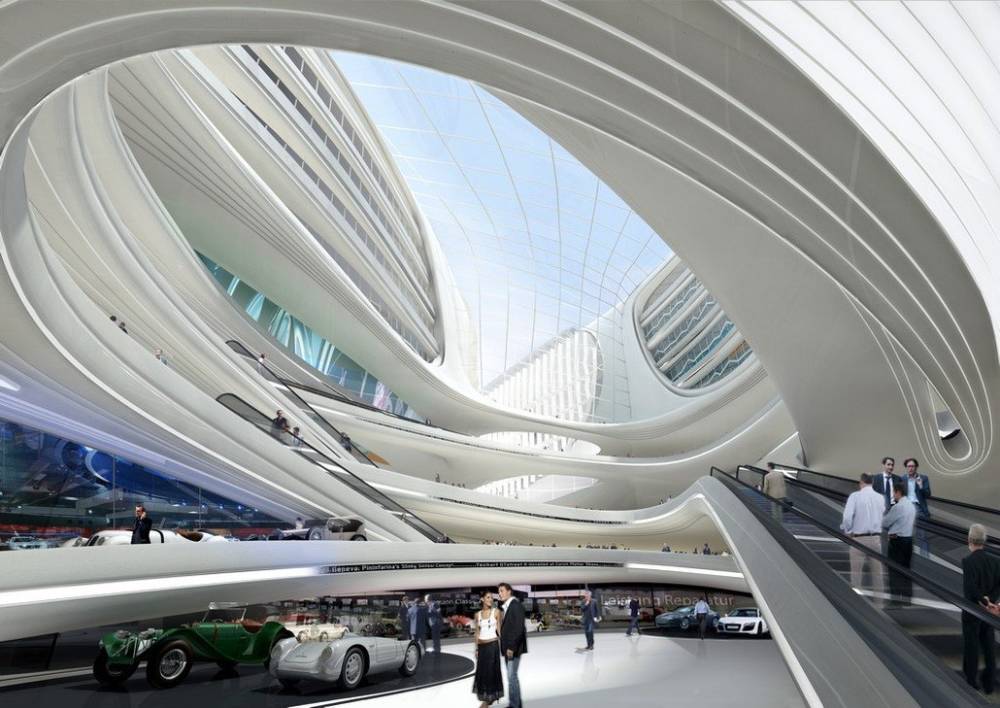
Zaha Hadid
The Circle at Zurich Airport

Zaha Hadid
Beijing International Airport
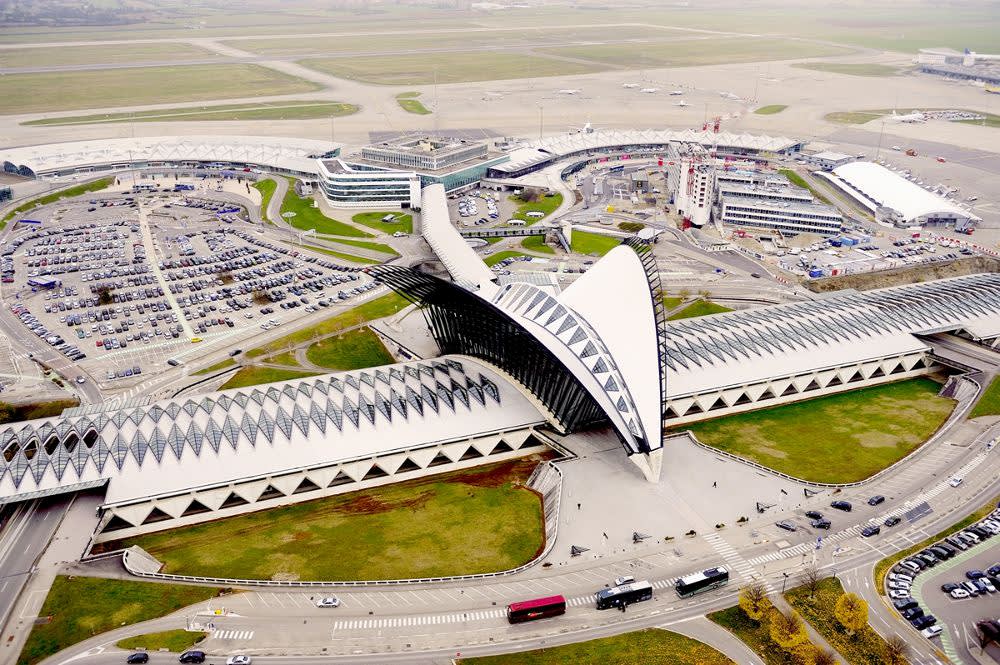
Santiago Calatrava
Aéroport Lyon Saint Exupéry
Industrial designers have also laid claim to airport improvements. Marc Newson has designed lounges at LAX and in Sydney for Qantas Airlines, and is in the process of designing small jet-powered airplanes. American sculpture Alexander Calder’s mobile was featured in the grand atrium of IAB, a small shared terminal in JFK, while Singapore’s Jewel Changi Airport, opening soon, was designed by Moshe Safdie’s firm, Safdie Architects, and will feature the world’s largest indoor waterfall and a temperature-controlled forest.
From fighter planes to commercial airlines, stewardess uniforms to airport lounges and entire terminals, the creative opportunities put forth by air travel are seemingly endless. It is no surprise why artists, fashion designers and architects alike have been so exchanted by the medium's associations with freedom, modernity, and the space age, for over a century no. As such, creative minds are engaged in a peptual dialogue with the ins-and-outs of travel, one that shows no signs of landing anytime soon.

Marc Newson
Qantas Lounge, Sydney Australia
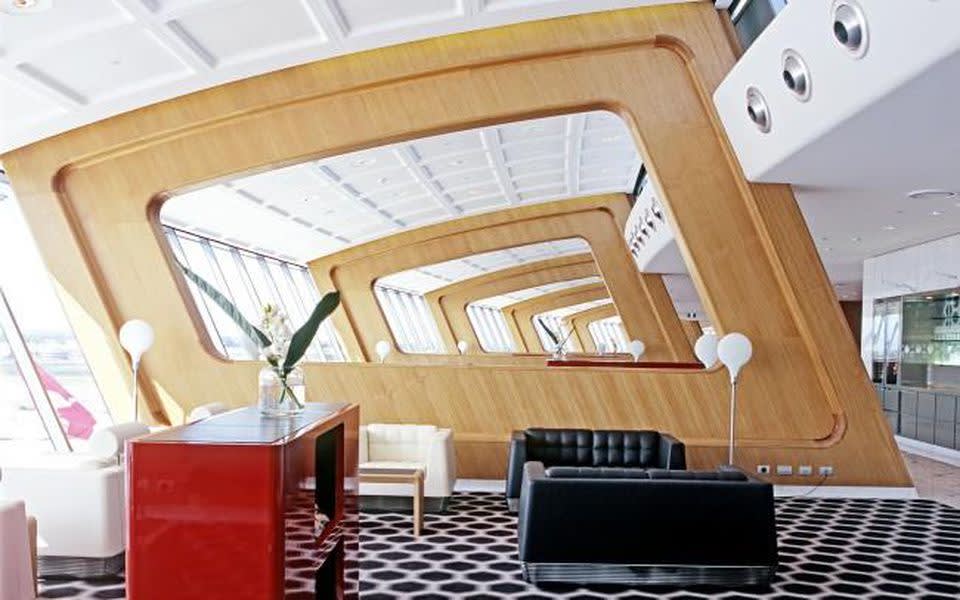
Marce Newson
Qantas Lounge, Sydney Australia
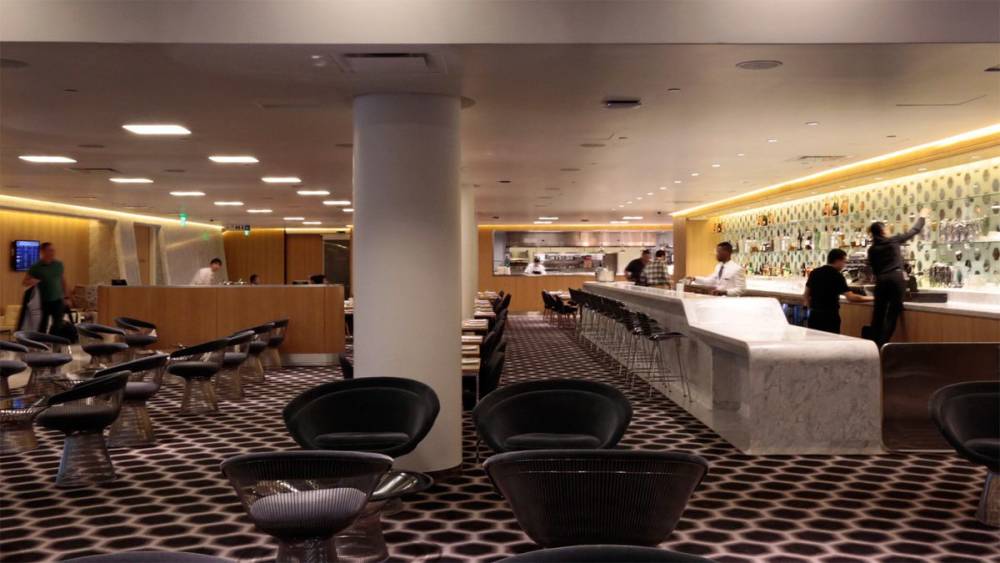
Marc Newson
Qantas LAX Lounge
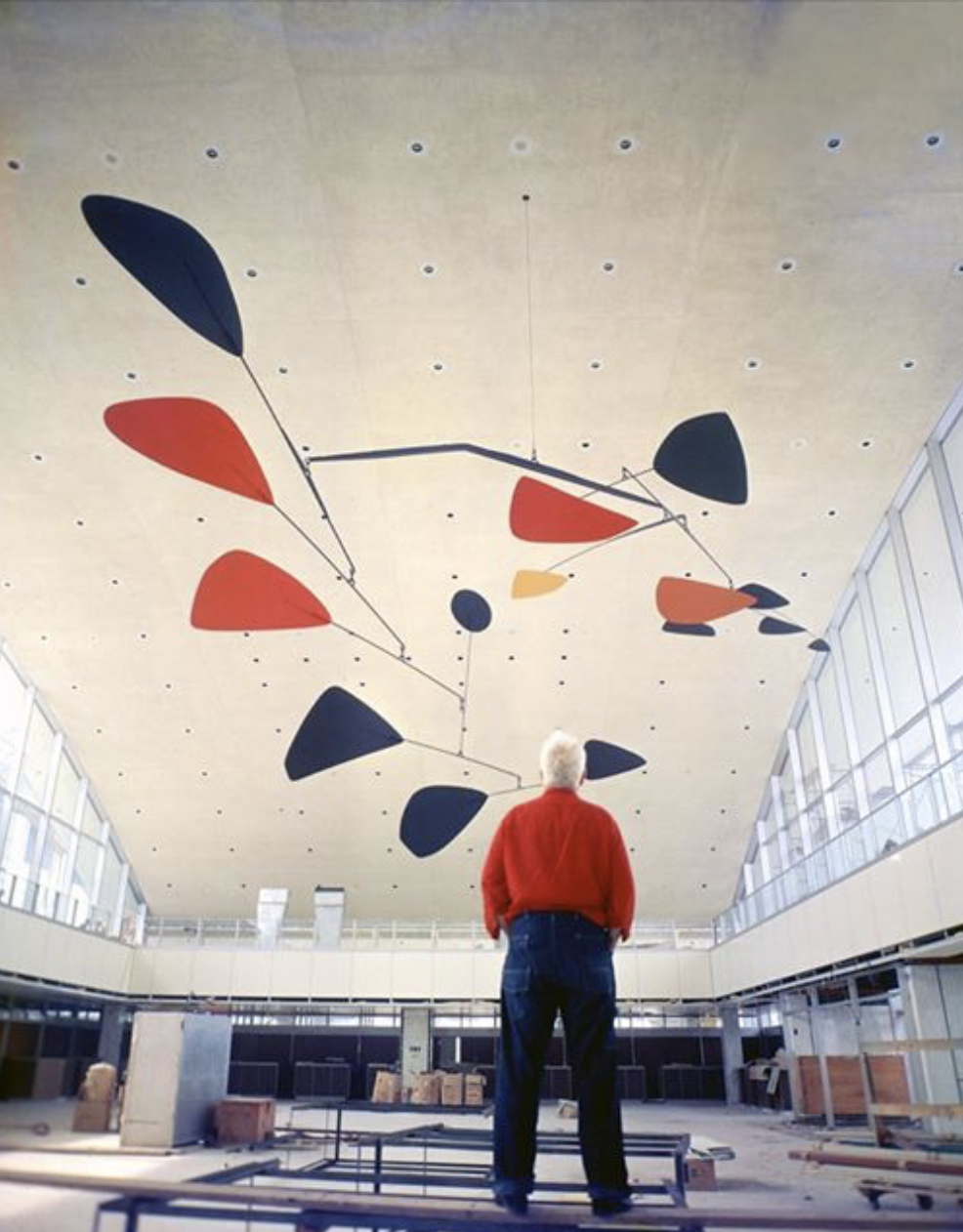
Alexander Calder
Sculpture, JFK
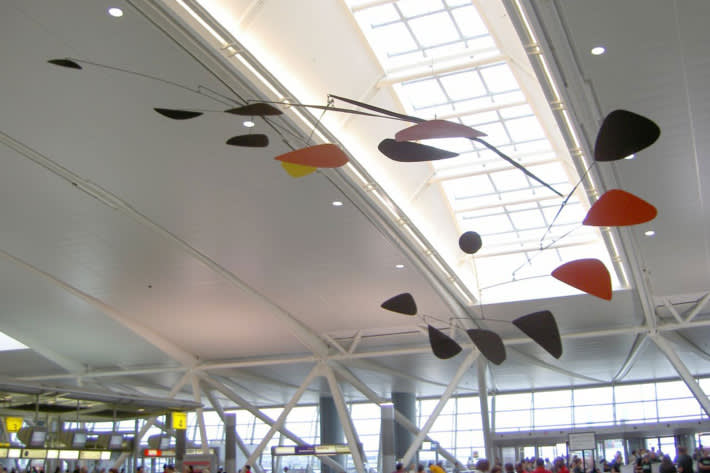
Alexander Calder
Sculpture, JFK
